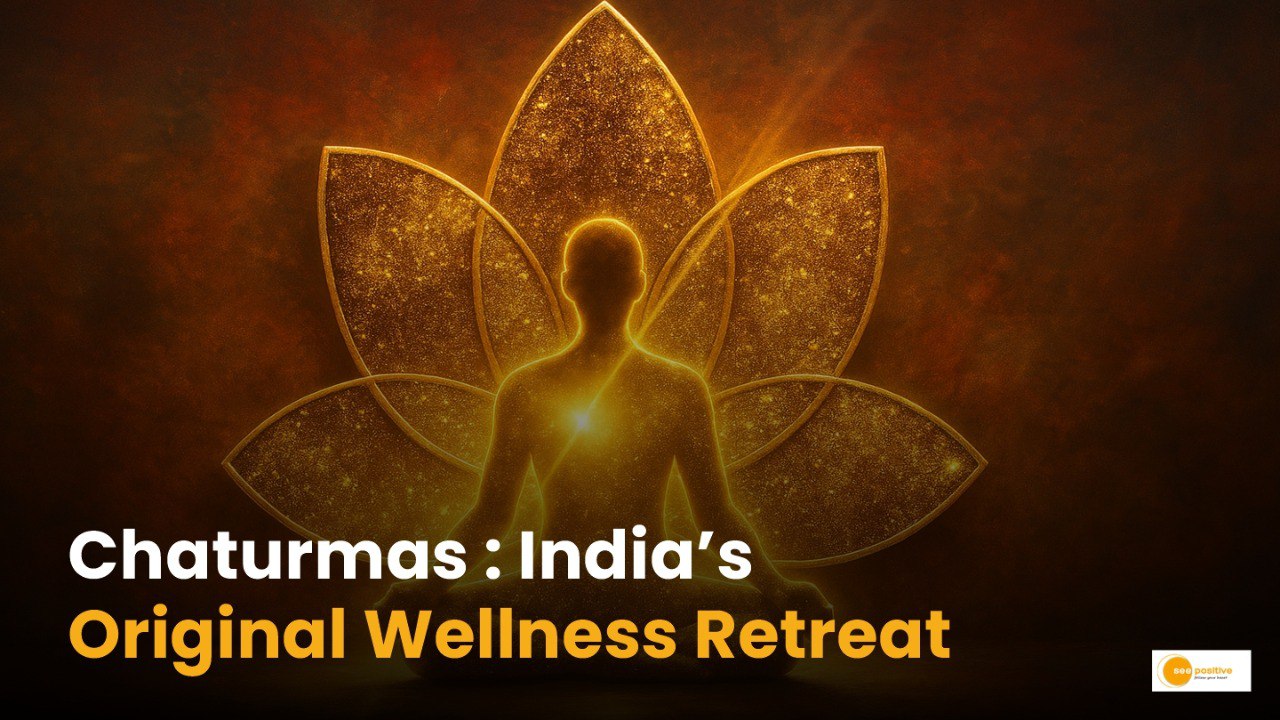When the monsoon clouds descend and the air turns heavy with rain and reflection, Hinduism enters a period of spiritual stillness known as Chaturmas (also spelled Chaurmaas) – literally meaning “Four Months”.
But this isn’t just a seasonal change. It is a sacred window when spiritual growth, self-restraint, and introspection take center stage. Chaturmas is a beautiful confluence of climate, culture, and consciousness — observed across India with both religious reverence and surprising scientific alignment.
What Is Chaturmas?
Chaturmas refers to the four-month period during the Hindu lunar calendar that begins with Devshayani Ekadashi (in the month of Ashadha, usually June/July) and ends with Prabodhini Ekadashi (in Kartik, usually October/November).
It is believed that during this time, Lord Vishnu enters a deep cosmic sleep (Yoga Nidra) in the Kshirsagar (cosmic ocean), and all major auspicious ceremonies like marriages, thread ceremonies, and housewarmings are paused.
Religious Significance of Chaturmas
- Vishnu Goes to Sleep: Devotees believe that Lord Vishnu sleeps during this time, entrusting the universe to Lord Shiva and Goddess Parvati for balance and protection.
- Spiritual Renewal: Saints, monks, and gurus who otherwise travel throughout the year, stay in one place during Chaturmas to teach, meditate, and guide communities.
- Fasting & Vows: Many people observe fasts, take vows of silence or celibacy, and practice intense spiritual discipline to purify the mind and body.
- Scripture Reading: Devotees engage in Ramayana, Bhagavad Gita, and Vishnu Sahasranama recitations daily.
Scientific Reasoning Behind Chaturmas
Though rooted in spirituality, Chaturmas aligns beautifully with natural and biological cycles:
- Monsoon Season: The four months coincide with India’s rainy season, a time when disease-causing bacteria and viruses multiply rapidly due to humidity and stagnant water.
- Digestive Rest: Ayurveda says digestion weakens during monsoon. That’s why people avoid oily, heavy, or non-vegetarian foods, giving the digestive system a break.
- Seasonal Diet Correction: Avoiding green leafy vegetables (which may carry worms during rains), fermented foods, and fast foods reduces the risk of infections.
- Mental Stability: Reduced social events allow more time for meditation and inward reflection, calming the nervous system and reducing stress.
What People Do (And Don’t Do) During Chaturmas
Common Practices Across Communities:
- Fasting on Ekadashis, Mondays, or the entire month of Shravan
- Giving up onions, garlic, and non-vegetarian food
- Chanting mantras, doing japa (repetition of divine names)
- Reading scriptures like Bhagavad Gita or Srimad Bhagavatam
- Practicing charity and service (daan and seva)
Things Usually Avoided:
- No weddings or large celebrations
- Avoiding night travel (for monks and saints)
- No construction of houses or major financial decisions
- Avoiding tamasic food (meat, alcohol, garlic, etc.)
- No shaving, haircutting (in many orthodox families)
Why Chaturmas Matters Today
In the modern world of rush, rituals, and restlessness, Chaturmas offers a pause button. It teaches us:
- To live simply
- To turn inward
- To eat mindfully
- To reconnect with values and devotion
Whether you’re deeply religious or just looking for a mental and physical reset, Chaturmas is India’s ancient wellness retreat disguised as tradition.
Chaturmas isn’t about restriction — it’s about realignment. With nature, with discipline, and with the divine within us.
It is a sacred invitation to slow down, reflect, and rise — body, mind, and soul.


